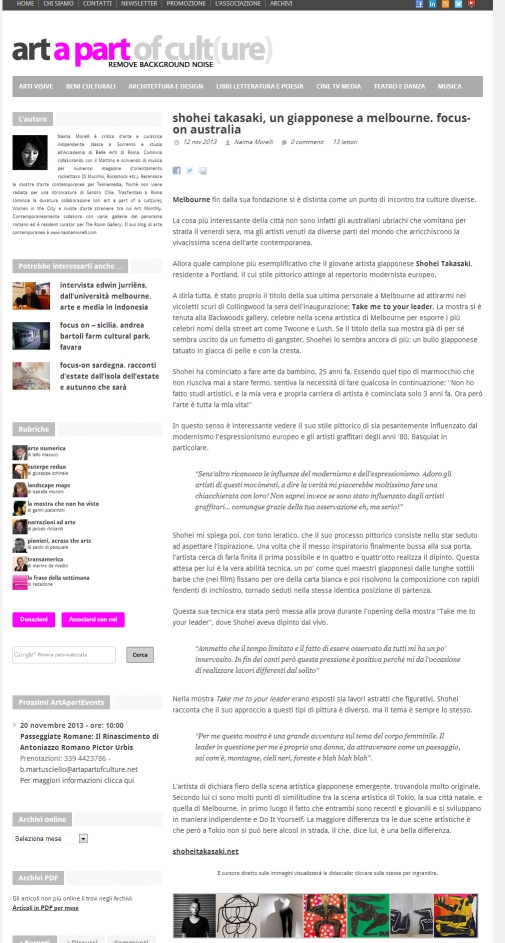
The Italian web magazine Art a Part of Cult(ure) has just published my interview with the Japanese artist Shohei Takasaki. The interview is part of my reportage about emerging artists in Melbourne.
Here the link to the interview
Read More
The Italian web magazine Art a Part of Cult(ure) has just published my interview with the Japanese artist Shohei Takasaki. The interview is part of my reportage about emerging artists in Melbourne.
Here the link to the interview
Read More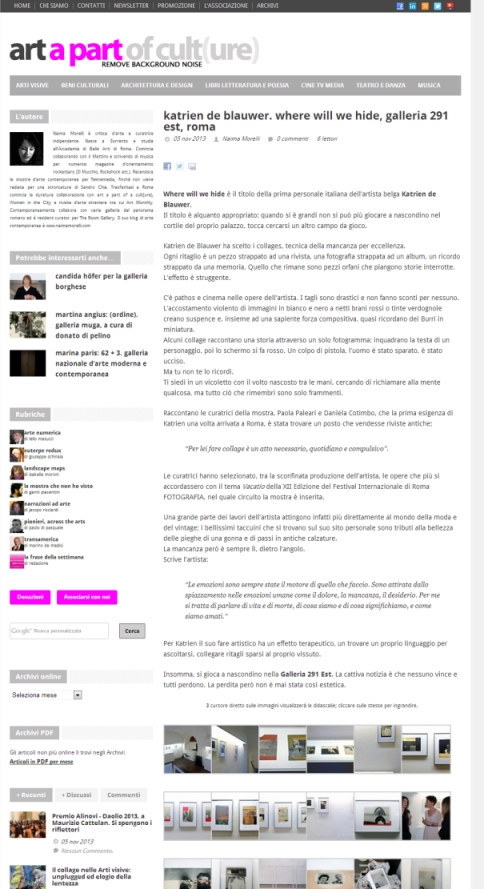
The Italian web magazine Art a Part of Cult(ure) has just published my review of the Katrien de Blauwer’s exhibition “Where will we hide” at Galleria 291 est, Rome.
Here you are the link to the review
Read More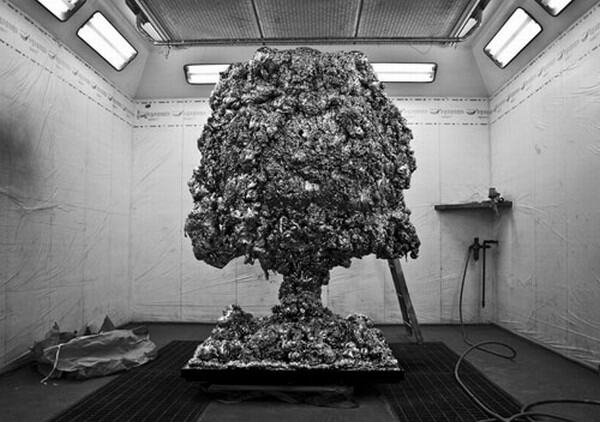
“Incalzatrice della storia Freno del tempo Tu Bomba / Giocattolo dell’universo Massima rapinatrice di cieli Non posso odiarti”
Correndo giù per Via dei Mille nel caldo di un aprile napoletano del duemilaundici, cercando di arrivare al Molo Beverello in tempo per prendere l’Aliscafo dell’una e cinque, vale a dire essere a Sorrento per le due meno un quarto circa, ecco in questa corsa (perché si sa che il movimento fa arieggiare il cervello, purchè non vada in iperventilazione) le immagini della mostra di Zabetta si sovrappongono, si alternano in rima baciata, alternata, incrociata e slogata ai versi di “Bomb” di Gregory Corso.
Sulla rampa di legno vigilata dai Vucumprà, a fianco al Maschio Angioino, inevitabilmente parole e immagini sono già tutta una pappetta, sbatacchiate come un frullatore nella mia testa, non resta che sedersi sull’aliscafo e fare un po’ di ordine.
Dunque, Coda Zabetta non penso proprio che abbia scritto una lettera d’amore alla Bomba, quello è stato Corso. Piuttosto quello di Coda Z. si tratta di un lavoro ordinato che ha condotto a un risultato efficace, puntuale e profetico, come ci hanno tenuto tutti quanti a rimarcare con occhi da Cassandra color acque di Mergellina, alludendo chiaramente alla recentissima tragedia nucleare giapponese.
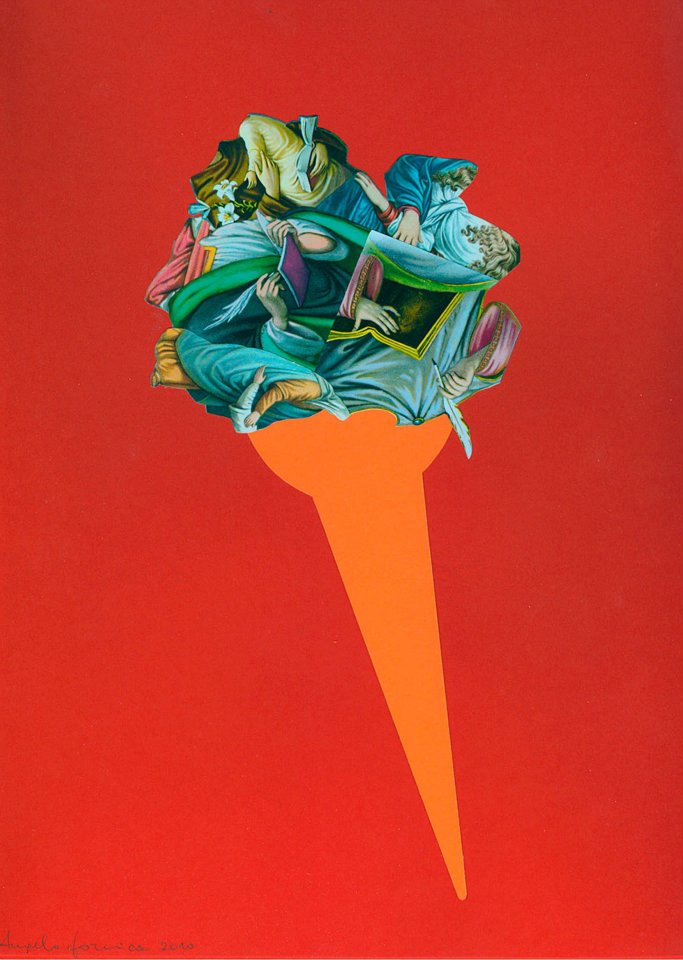
Che cos’è il Popolo?
Ci sono solo due modi possibili per rispondere a questa domanda, o chiamare in causa studi antropologici del tipo Fabio Dei, Cirese, De Martino, oppure argomentare con l’arte.
L’una comprensione è intellettuale (vi parleranno di società dei consumi, snaturalizzazione bisogni, egemonizzazione e compagnia), l’altra parla direttamente ad un sentire.
Il lavoro di Angelo Formica, che ho avuto modo di beccare alla fiera Rome Contemporary, va esattamente in quella direzione.
Con un’operazione surrealisticamente a supportare un significato, anzi un’identità, quella popolare più precisamente, Formica gioca con i simboli della tradizione.
Il suo background siciliano (è originario di Milazzo) l’ha immerso fin da bambino in un humus culturale che è riuscito a rielaborare solo una volta trasferitosi a Milano, recuperando quel necessario distacco.
Un po’ come Jorge Amado, grandissimo scrittore del Popolo, il quale riusciva a narrare del suo natio Brasile solo quando si trovava a Parigi.
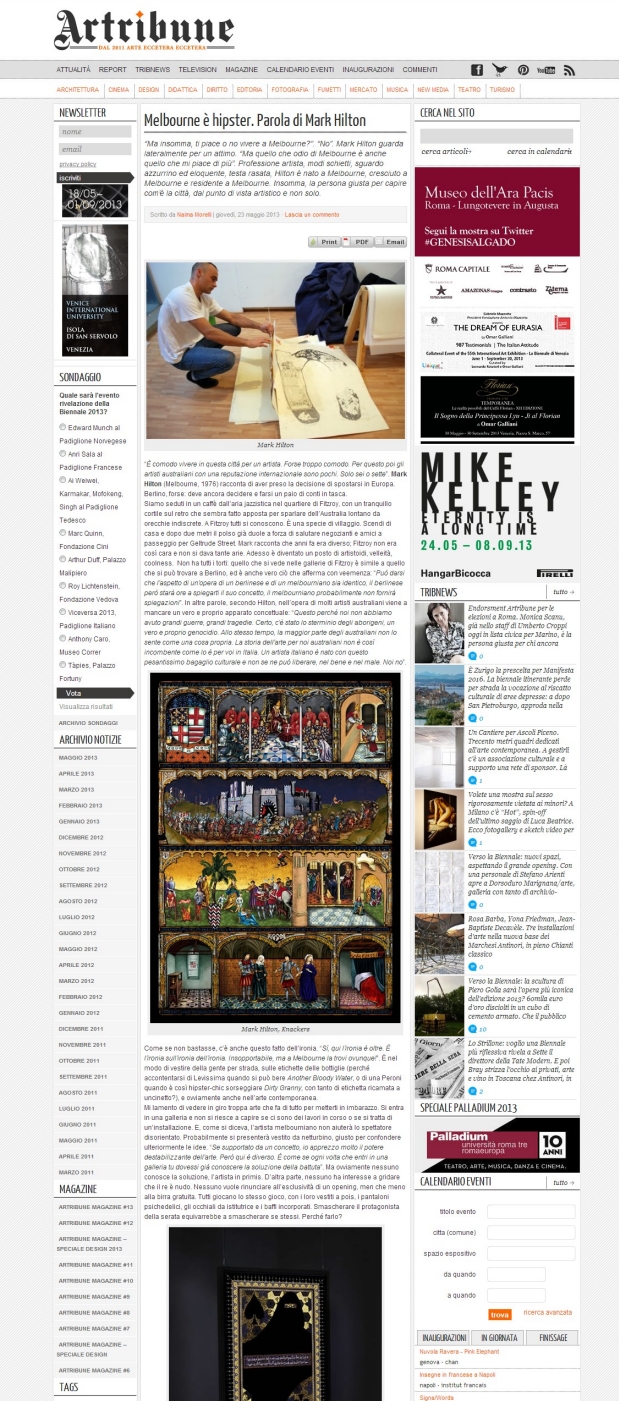
The Italian magazine Artribune just published the interview I had in Melbourne with the artist Mark Hilton. The interview is part of my reportage about the Melbournian Art Scene.
Here you are the link to the interview
Here you are the pictures from my visit to the artist’s studio
Read More
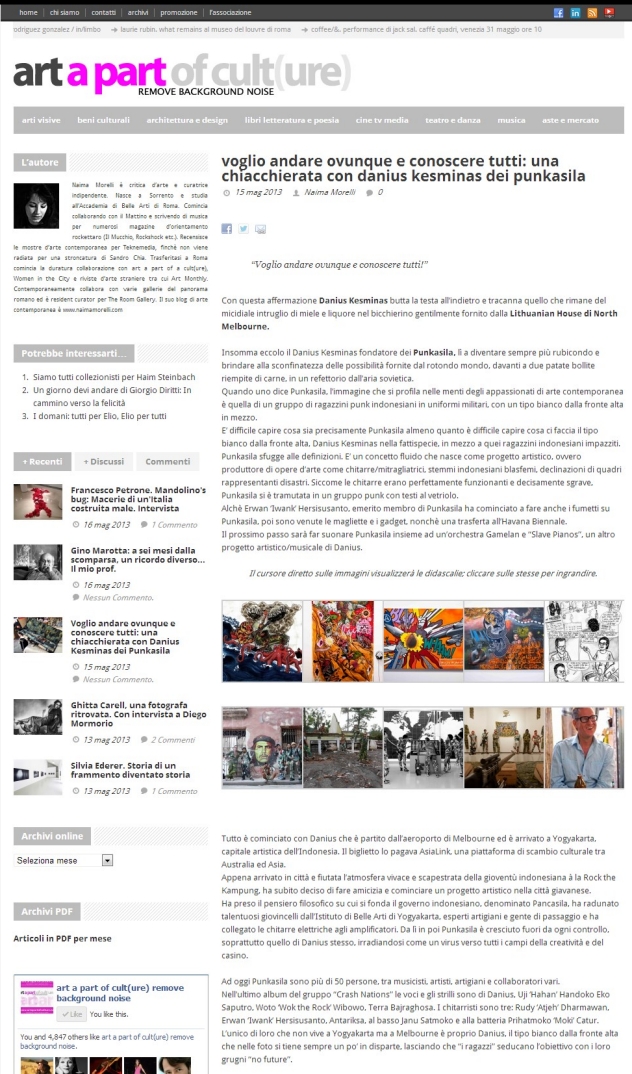
The italian web magazine Art a Part of Cult(ure) just published the interview I had in Melbourne with the artist Danius Kesminas, member of the Indonesian Punk-Rock Band/ Art collective Punkasila. The interview is part of my reportage about Indonesian Contemporary Art.
Here you are the link to the interview
Read More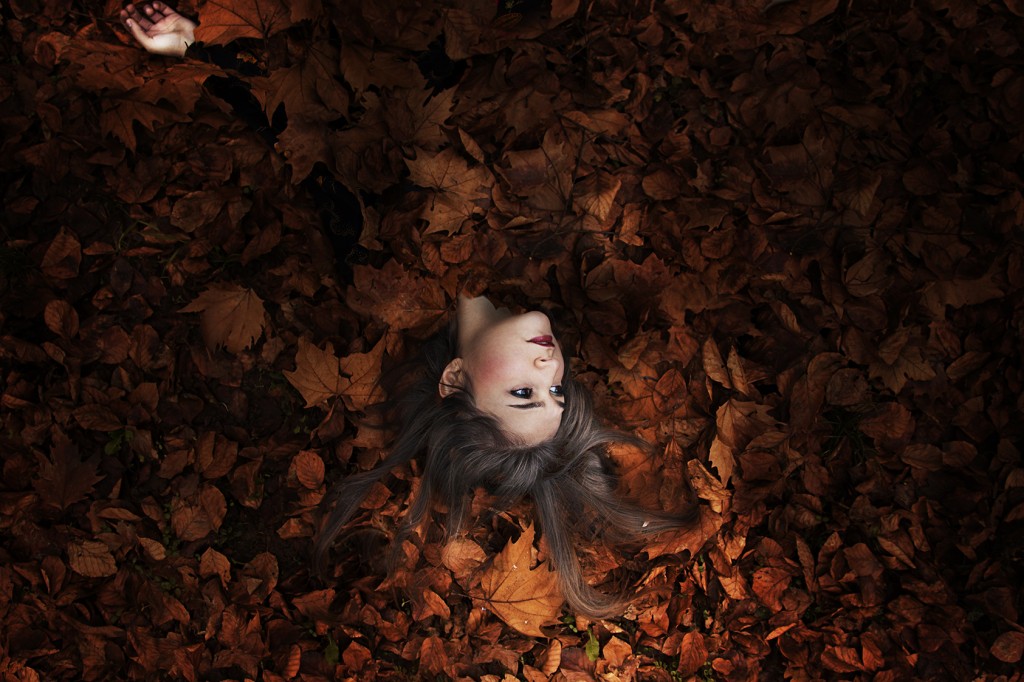
This is a short essay about the Italian photographer Sara Magni that I wrote some time ago for the catalogue of “Fuori 5”, an exhibition at Galleria Gallerati, Rome:
“Waking up from a nightmare of desolation, discovering to be frightening and completely alone.
Founding themselves in a cruel and frozen night, in a pasolinian lawn. When the concrete buildings are the background, you suddenly realize that your room’s walls are just a fleeting shelter. Is it all just in our own mind, or is it actually a torched dream?
The series “Doppio Incubo” (Double Nightmare) was realized for the Premio Cairo at the Permanente in Milan. In this work the author explores the theme of man’s estrangement in the city. Sara Magni ventures in the human psyche, taking snapshots directly from the subconscious. She enacts characters that seems out of context, but at the same time she forced us to deal with them. No one has the voice to cry his longing for an “elsewhere”, we can read in his photos a frozen shadow of reality. Her research is displaced in the suburbs and non-places loaded with a reflection or anxiety, a sort of alienation in between Antonioni and David Lynch.
Read MoreThe Italian web magazine Art a Part of Cult(ure) just published my review on the exhibition “Rally – Contemporary Indonesian Art” at the National Gallery of Victoria. The interview is part of my reportage about Indonesian Contemporary Art.
Here you are the link to the review
Here you are the link to the English translation of the review
Read MoreThe Italian web magazine Art a Part of Cult(ure) just published my interview to the Indonesian artist Aditya Chandra H. The interview is part of my reportage about Indonesian Contemporary Art.
Here you are the link to the interview
Read More